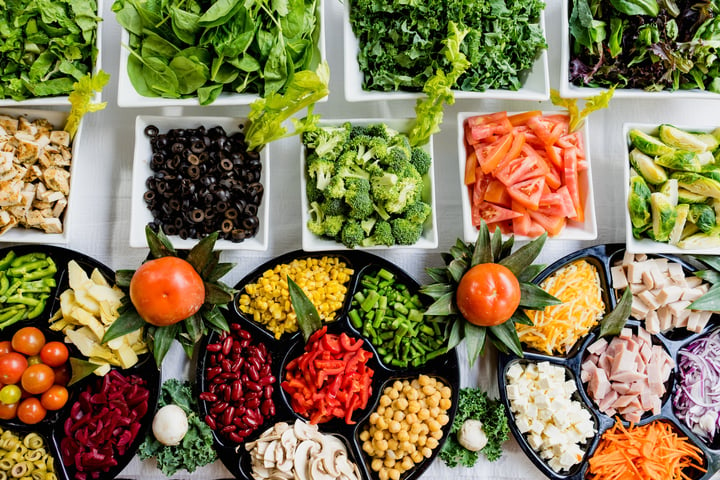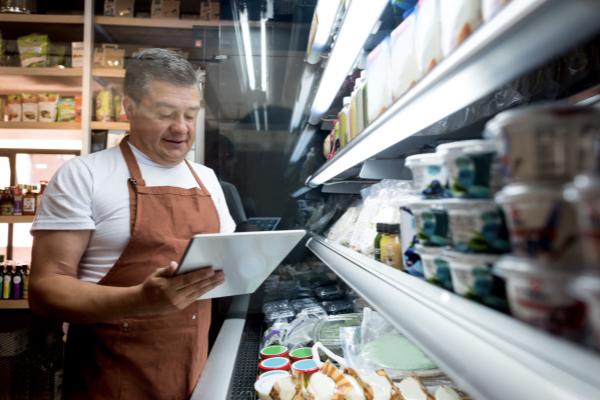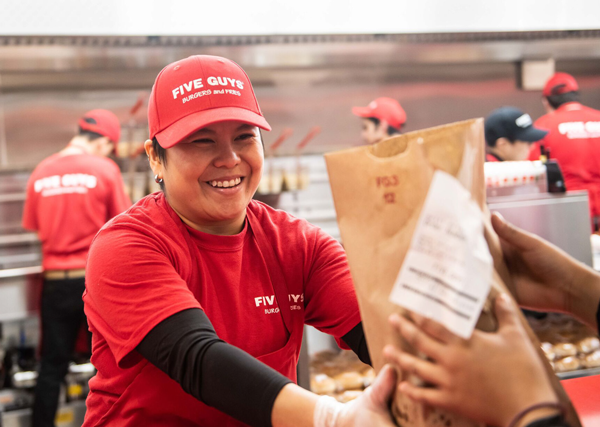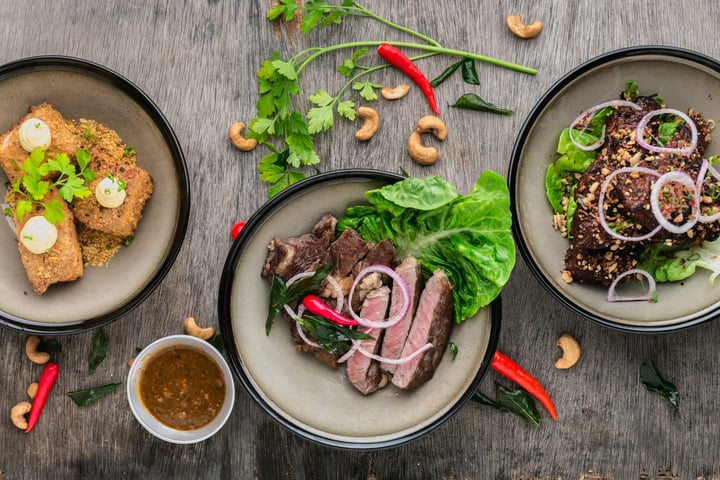
- Home
- Crunchtime Blog
- 10 Tips to Reduce Food Costs and Close the Food Cost Variance Gap

10 Tips to Reduce Food Costs and Close the Food Cost Variance Gap
Right now, it feels like food costs increase in the blink of an eye, and for restaurants, any increase eats away at already-slim margins. Restaurants are facing increased food and packaging prices from vendors, and when coupled with under-trained, novice employees and decreasing consumer predictability, many operators likely feel that they can’t win.
Every restaurant will have a unique set of reasons why their food cost fluctuates from what is expected. In the industry, it is common to hear the term ‘AvT,’ which stands for Actual versus Theoretical food cost variance. The ‘actual’ component refers to the amount of product that the store uses and its associated cost, this amount is determined by counting inventory, whereas ‘theoretical’ refers to the amount that the restaurant was expected to use and its cost based on what gets typed into the POS system. The larger the gap-the more unpredictable the food costs.
Most restaurants will find that they are spending more on food than expected, while some will find that they are using less (usually due to under-portioning). Either way, having actual food costs very similar to expected food costs is ideal.
Check out the video below for a quick overview of the 10 tips, and read through this post for the full ten strategies that can be implemented to target and resolve different root causes of increased food variance to get your restaurants on track.
1. Match every item purchased for the restaurant against the invoice
Food cost management starts the second the product arrives in the store. An incorrect delivery that goes unnoticed can cause big problems, not just for tracking AvT, but for making sure you don’t run out of something vital. Have store managers compare vendor invoices with what arrives in the store to ensure that the restaurant is paying for what they actually get–no more, no less. Along with determining accurate quantities, managers should also check product quality; check the packaging for damage, open produce boxes to check for contaminants like dirt, rocks, or mold, evaluate use-by dates for accuracy and ensure that they do not expire before the next order arrives. Just because something is delivered does not mean it is useable.
Best Practice: Conduct invoice and product checks as quickly as possible once an order arrives, as many vendors will not offer refunds or replacements if too much time has passed.
2. Use measuring cups, spoons, and scales to properly portion food during prep
Inconsistent portioning can severely affect your AvT variance. Remove the guesswork from prep by providing teams with measuring cups, spoons, and scales to promote accurate portioning. Make sure the utensils are distinguishable and clearly labeled to avoid mixups. Provide easy access to training materials so employees can refer back when they need help with proper portioning amounts. Have managers regularly check that employees are using the right serving utensils and using them correctly (not over-filling). Additionally, ensure that the proper serving utensils and measuring cups are available for the service line when needed. Portioning mistakes go both ways; having the right equipment and tools will help ensure that your guests get the right amount each time, not too much or too little.
Best Practice: Have backup utentsils available. When utensils need to be washed, get broken, or are misplaced, team members will have backup options to use.
-1.jpg?width=600&height=400&name=600x400%20px%20image%20crop%20(43)-1.jpg)
3. Eliminate high-cost, low-margin menu items
Restaurant operators know that some menu items are not as profitable as others, and with certain ingredients increasing exponentially in cost, it can mean that some menu items are not as profitable as they used to be. Evaluating and eliminating these items or finding ways to make them more cost-effective is a great way to reduce food costs and make your menu more profitable. Expensive items can have an outsized effect on the AvT gap.
Be careful, though, as some menu items are “loss-leaders,” meaning that while the item itself may not be profitable for the restaurant, but they are often bought with other items that have higher profit margins. For example, a specific sandwich on the menu may be costly to the restaurant on its own, but if it brings in customers who also purchase high-profit drinks or sides, then it could be beneficial to the restaurant. Eliminating this type of item may have an adverse effect on profitability, especially if the menu item is a customer favorite.
Best practice: Regularly evaluate menu profitability and customer preferences to ensure that the menu drives ROI. There may be seasonal differences in customer preferences and ingredient costs which can drastically affect profitability.
4. Transmit orders directly from POS to the kitchen to avoid unrecorded sales
Restaurants that aren’t utilizing a POS system that connects straight to the kitchen are in jeopardy of having sales that aren’t getting recorded. Meanwhile, relying on physical tickets can result in orders being made in the wrong order (increasing customer wait time) or being misplaced altogether. Using a POS system that can communicate with screens in the kitchen to automatically send orders can dramatically improve restaurant communication and performance. Your POS system should allow employees to call out when customers have special requests or allergies that need to be noted. Even just a note that says “see me” ensures that important information will be communicated.
Best practice: Make sure employees have a way to log replacement dishes (without charge) to help track product usage. Routinely evaluate how many replacement orders are being logged, and if high amounts are being recorded, discuss the causes with your team.
5. Track processes to identify where food waste can be reduced
Food waste, especially for expensive ingredients, should be carefully tracked. Any product in the store that cannot be sold should be recorded as waste, such as food products that are expired or items that fall on the floor. Make sure to set up solid communication channels with team members to ensure that when they are discarding expired products, they tell a manager about it so it can be recorded. Proper training is also useful in knowing how to correctly track and record waste and why waste is being recorded in the first place.
Best practice: Use an inventory management system with built-in waste tracking. This will make it easier and more accurate when going to record waste, and the data can be used to find patterns on when and why certain items are being wasted so that your team can develop an action plan to address excess waste.
6. Monitor customer food waste and cut portions where necessary
Regarding food waste tracking, many restaurants fail to look outside of their kitchens. If your restaurant’s trash cans are always full of extra french fries or the leftover lettuce from the bottom of a salad, then chances are most customers won’t be upset by, or even notice, reduced portion sizes (especially if it can mean a price increase can be delayed). Take time to evaluate what customers are throwing away or have bussers keep track of what is most often left on customers’ plates and report to management routinely. One common culprit of excess waste is sides of sauces, especially house-made sauces like aiolis or ranch dressing. Automatically serving sauces means that often they only get partially used if touched at all. Reducing sides of sauce from two ounces to one, or asking customers if they want sauce instead of automatically providing it, can help reduce food waste without reducing portion sizes for your actual menu items. Plus, it will save time during prep, and if sauces are served in reusable cups, then your dishwashers will thank you.
Best practice: Evaluate portion sizes offered by competitors with similar types of menus to gauge customer expectations and industry standards.
7. Educate your staff on food costs during onboarding and continued training
Those who have been in the industry for a while likely find food-cost management to be second-nature, but to new employees or managers, food cost can be a complicated and overwhelming subject. Help your restaurant management teams find success by educating them from the start on how to best manage food costs and provide ongoing training and refresher courses. From understanding AvT to placing product orders to tracking inventory and waste, restaurant management teams have a lot to learn about food cost management, so breaking up the training into smaller sessions can help aid in successful retention.
Best practice: Make training materials accessible at all times so that team members can refer back when needed. This will help them feel more comfortable and will result in more accurate food cost management.
.jpg?width=600&height=400&name=600x400%20px%20image%20crop%20(60).jpg)
8. Provide free employee meals to build team morale and reduce shrinkage
After a long shift serving your restaurant’s food, it is likely that employees will be hungry. Providing free meals to staff can be an added bonus that helps build morale by making employees feel valued and also prevents food shrinkage. For example, if an employee has to pay for their meal, they may end up adding extra toppings to their sandwich or sneaking a soda refill, negatively impacting food costs and increasing the AvT gap. Providing free employee meals, and setting the expectation that everything that comes out of the kitchen will go through the POS system, will result in better food tracking and provide more insight into actual usage.
Best practice: Set a limit on food allowances per shift that is within reason based on your restaurant’s menu and communicate that the free meals only apply before, during, or immediately after the employee’s shift.
9. Purchase food and supplies in bulk when applicable
It is no secret that buying in bulk usually comes with lower costs, and restaurants are in the perfect position to take advantage of the savings. Buying in bulk, or purchasing directly from a distributor, can cost significantly less than purchasing items from a grocery store shelf due to the reduction of packaging and handling costs. When choosing which items to buy in bulk or from a wholesaler, select products that your restaurant will be able to use before the product expires; otherwise, the cost savings from buying in bulk or from a wholesaler will be canceled out by waste. Buying in bulk applies not only to food products and packaging but also to office and cleaning supplies or even outdoor maintenance products like salt for sidewalks if your restaurant is prone to winter weather.
Best practice: Before buying a large amount of bulk product, ensure that your restaurant has enough space for storage, or the items may be improperly stored, raising the likelihood of them getting damaged, misplaced, or not used in the right order.
10. Hold quarterly food pricing reviews with vendors
Food cost management is a continuous process, especially with fickle food prices. It is important to meet with vendors often to review the prices. Remember that while your vendors are in the business to earn a living, a good vendor will also want your restaurant to succeed and will do what they can to make that possible. Maintaining positive relationships with your vendors can also ensure that they will do what they can to keep your business.
Best practice: Research current prices and trends for key items so that you can go into each meeting with fair expectations and can use the information to advocate for your restaurant when appropriate.
.jpg?width=600&height=400&name=600x400%20px%20image%20crop%20(25).jpg)
Managing food costs can be a daunting task for restaurant operators, but implementing a strategy that addresses food costs from every angle is the best way to make sure nothing slips through the cracks and widens your AvT gap. A structured approach to food cost management can complement the chaos often found in kitchens, so be sure to set goals, schedules, and expectations with your restaurant management team.
To learn more about AvT variances and how your restaurant can optimize food costs, download the Actual vs. Theoretical Food Cost eBook.
Share this post
Related


How Five Guys Franchisees Reduce Food and Labor Costs

